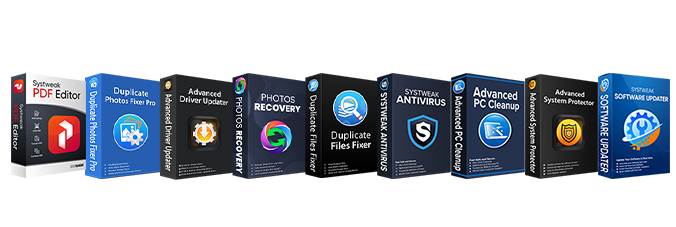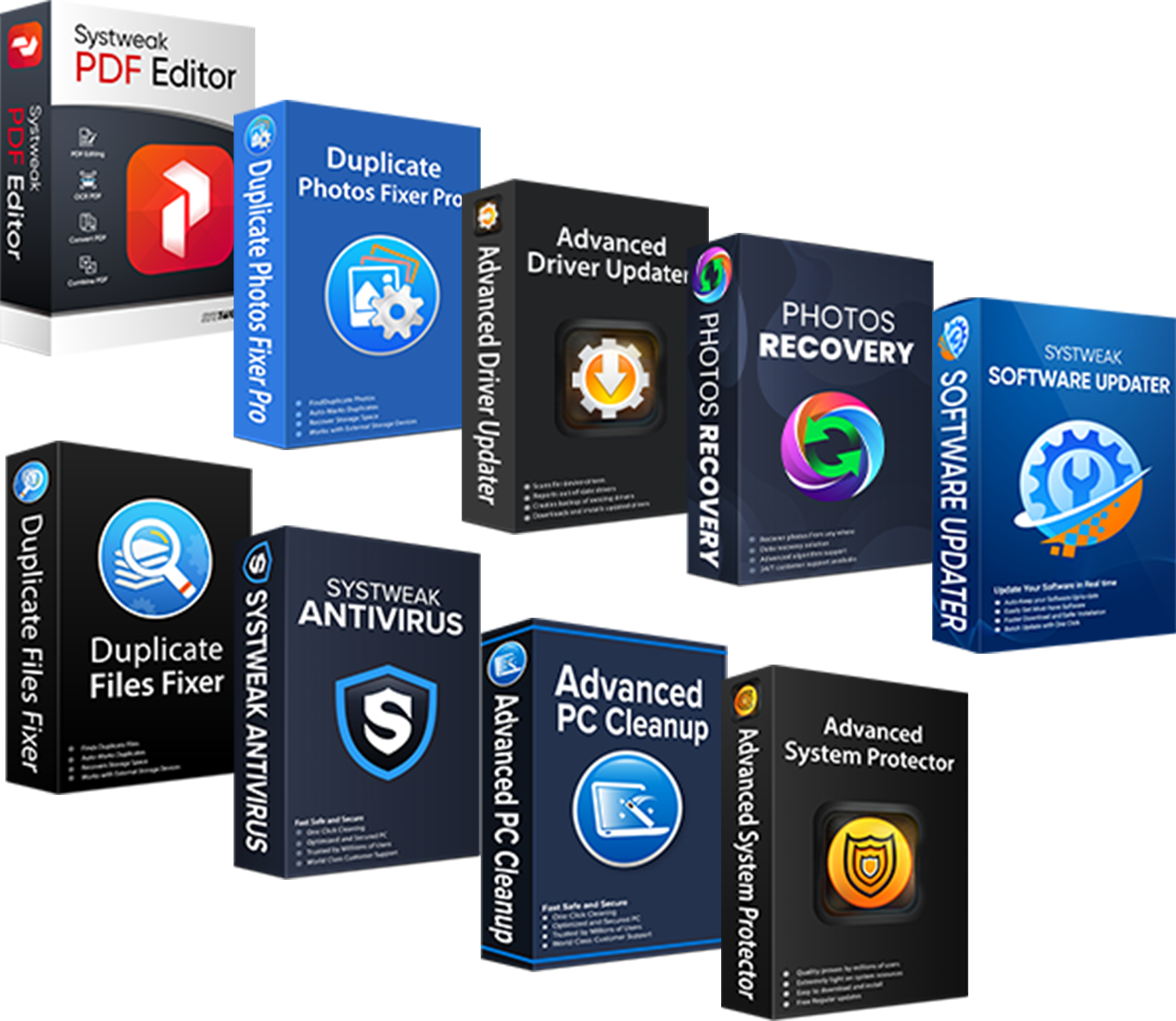Using a PC has become the ultimate necessity of today. No matter what field you are from, you will interact with a computer in one way or another. These machines have made our lives easier in terms of performing complex operations efficiently. While every industry has adapted elite versions of professional computing machines with higher potential, personal computers are always the most commonly used devices.
50% OFF

BLACK FRIDAY OFFERS
Unlock Black Friday Mega Savings — Systweak Tools FLAT 50% OFF!
Industry-specific computers are well maintained and always have dedicated experts to handle malfunctioning, but the same is not the case with a PC. There are so many issues and problems that may arise when you are using one. Since it is a PC and only some users are tech-heads, these problems may seem like a big issue.
In this blog, let us take a look at common PC problems that you might encounter while using and how you can fix them on your own.
5 PC Problems You Can Resolve on Your Own & How
Usually, people who are not tech-savvy tend to call experts for the smallest of errors on their PC. For instance, the error “Windows Explorer is not responding” might mean anything to you if you do not know that it is just a simple hanging issue.
Similarly, there are so many issues that seem bigger but can be easily resolved if you know the core cause. Take a look at the following 5 common issues that you can fix on your own.
1. Slow Startup Speed
If your PC is taking a long time to boot, chances are that you have a lot of startup applications lined up. Applications like your messaging tool, browser, antivirus, etc., often run automatically when your PC starts, and thus, your RAM is already occupied. If the startup speed is slow, follow the steps given below – ṣ
- Press Ctrl+Shift+Esc to open the Task Manager
- In the Task Manager go to the top left corner and click on the three-lined button to unveil the side options panel.

- From the panel, navigate to startup apps and disable all unnecessary applications. To disable an app, select the application and find the disable button on the top panel.

- Simply repeat the process for all the unnecessary applications you can find.
After disabling all the applications, restart your PC, and you will instantly witness the difference in the startup time.
2. Windows Explorer Keeps Freezing
If the Windows Explorer keeps freezing on you while switching applications, or you often encounter the Windows Explorer is not responding. Chances are that either your PC has lower RAM, or is infected.
If the RAM management is taking a hit, you can restore the balance of occupancy by opening the task manager and shutting down heavy applications instantly. Here’s how to do it.
- Press Ctrl+Shift+Esc to open the task manager
- In the task manager, click on Memory to sort applications based on memory usage.

- As you can see in the screenshot, 85% of the memory is already in use. If I were to launch another heavy application, it might freeze my PC, considering there’s not enough memory to be used.
- End the processes/tasks that are not being used.
If you want to start a game, it is suggested that you shut down all the heavy applications. This will speed up the process.
This should easily resolve the freezing issue if the cause is lower memory. However, if this does not resolve the issue, you should go for an antivirus scan as there is a strong possibility of a virus attack.
Read This – How To Run Disk Cleanup On Your PC
3. Running out of Storage
If you have often received an error that your PC is running out of storage , it might be due to disk fragmentation or junk data.
This is a common problem as unwanted data keeps accumulating and takes up unnecessary storage space.
To recover space avoid keeping bloatware on your PC. Files that are not crucial or duplicate files must be instantly removed from your PC. You can also try to defragment your hard drive, here’s how that works –
- Open This PC on your computer and select the drive you want to defragment.
- Right-click on the drive to find properties. Open properties.

- In the properties dialog box, navigate to tools here, you have the option to optimize your hard drive. Click on it.

- Once you open it, you will find the information related to what percent of your hard drive is fragmented. click on optimize to resolve any fragmentation issue, and you are good to go.
This way, you can maintain your hard disk-related issues. If the storage is taken by duplicate files, you must find and delete them to free up space.
4. Overheating & Fan Noises
If you are using a laptop and it overheats every time you start using it, it might be a hardware issue. Shutting down the PC or lowering your usage hours can make a difference however it is always better to get the hardware checked.
Not to mention, if you are observing fan noise and hard drive noises, it is not a great sign for your PC. get it checked at a reliable service center instantly. To avoid any loss of data, make sure you have created backups.
5. Other PC Issues You Might be Unaware Of
It happens several times that you are unable to find simple and useful icons like This PC, Recycle Bin, etc., on the desktop. Or sometimes your PC blanks out for a moment and then automatically resumes. This seems to be a relatively smaller issue but can irritate you while to avoid that, you must do something.
But how? Well, a dedicated PC Optimizer called Advanced System Optimizer can help with the cleanup task and fix common PC issues. Here’s how the tool works –
- Download and install Advanced System Optimizer on your PC from button below.
- Run the application. You will find the home screen for the application that looks like this.

- From the home screen, select the scan type and click on Start Smart PC Care.
- A new dialog box pops up. Here you will see the scan initiating. You can wait while the tool will check your PC for common issues one by one.

- Once the Analysis is finished, the software lists issues that were found in different sections of the PC.
- Click on Optimize to initiate the process. The rest will be done by the software.

After the processing finishes, restart your PC and you will realize that your PC has become smoother than before.
Conclusion
All these common issues require your attention and you can fix them using the given techniques. If these methods feel a little too much, you have the option of downloading or using Advanced System Optimizer to fix PC issues in a single click.
Advanced System Optimizer is one of the most advanced tools to optimize PCs and get the best performance out of it. You no longer need to depend on your smart cousin to help you with common PC problems as this optimization tool is enough.
Recommended-
How to Fix Windows 11 High Disk Usage
Best Ways to Fix File Explorer is Slow in Windows 11
How To Fix – System Restore Not Working In Windows 10
How To Check Hard Drive Health on Your Windows PC





